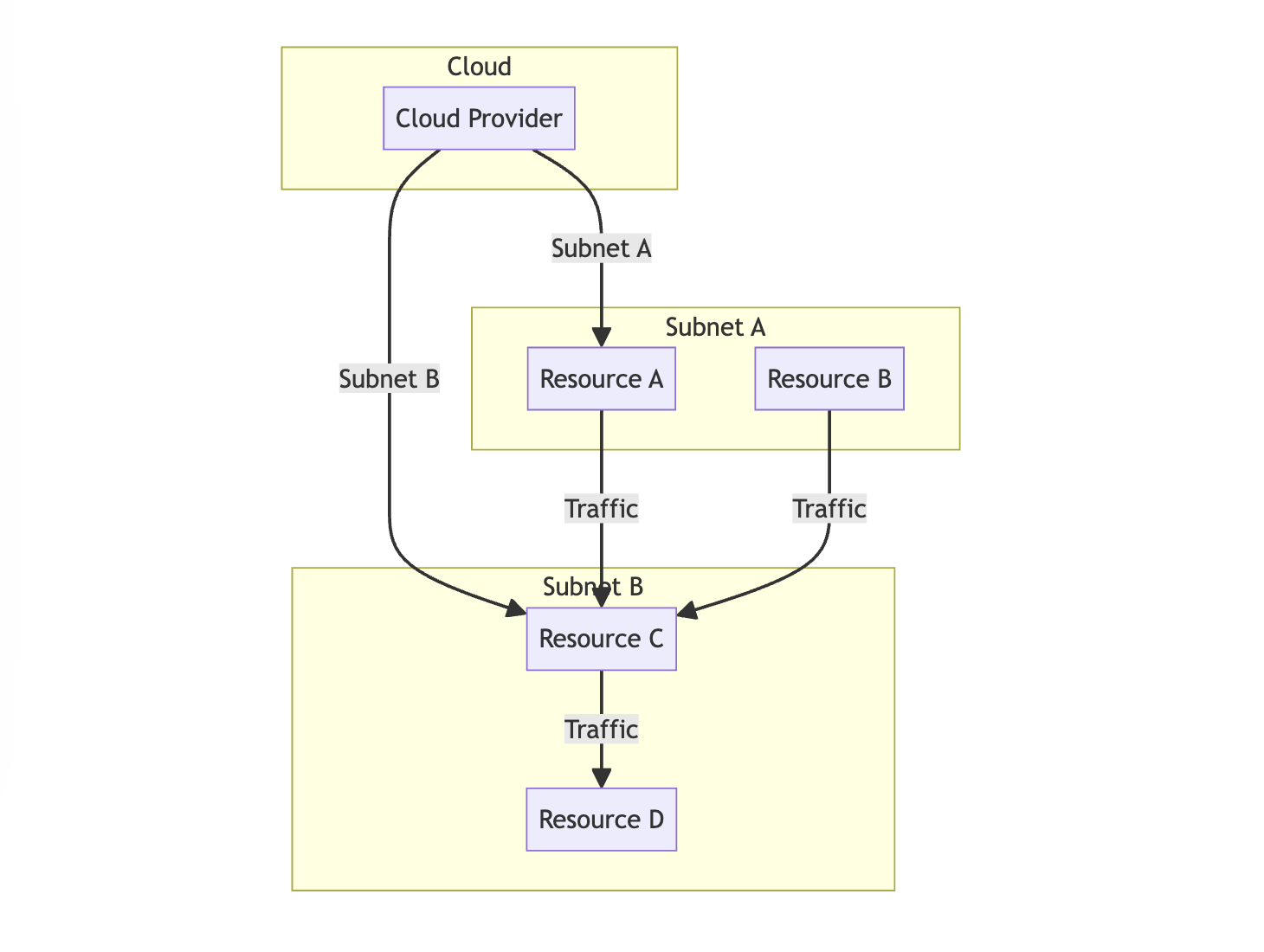Cloud Computing
- Learn the basics of cloud computing
- The Rise of Cloud Computing
- Infrastructure as a Service guid
- Platform as a Service (PaaS) in Cloud Computing
- SaaS Implementation Best Practices
- Top Cloud Providers: Elevating Your Business to New Heights
- Why Not to Use Cloud Computing
- Cloud VPN Guide
- Cloud Subnet role and Benefits
- Challenges of Data Security in Cloud
- What is AWS and how does it work
Maximizing Efficiency: Cloud Subnet Best Practices
In the ever-evolving landscape of cloud computing, efficiency is a key driver for success. Cloud subnets play a pivotal role in optimizing your cloud infrastructure. This comprehensive guide explores best practices, insights, and strategies to ensure that your cloud subnets are not just a part of your network, but a catalyst for efficiency and performance.
As organizations increasingly migrate to the cloud, the architecture of their cloud networks becomes critical. One of the fundamental components of a cloud network is the subnet. A subnet is a logical division of an IP network, and its proper configuration can significantly impact the performance, security, and scalability of your cloud environment.
What is a Cloud Subnet?
A cloud subnet is a range of IP addresses in a virtual network. It acts as a container for virtual machines, services, and other resources within a cloud network. By dividing a large IP space into smaller subnets, you can isolate and manage different components of your network more effectively.
Key Benefits of Cloud Subnets
1. Network Segmentation
Cloud subnets enable network segmentation, which is essential for organizing and securing your resources. You can group related resources into the same subnet, allowing for better traffic management and security controls.
2. Improved Performance
Efficient subnet design can lead to improved network performance. By reducing broadcast traffic and optimizing routing, you can minimize latency and enhance the responsiveness of your cloud services.
3. Enhanced Security
Subnet isolation enhances the security of your cloud environment. Resources in different subnets can have different security policies, providing an additional layer of defense against unauthorized access.
4. Scalability
Cloud subnets support the scalability of your cloud infrastructure. As your organization grows, you can easily add new subnets to accommodate additional resources and services.
Best Practices for Cloud Subnets
1. Plan Your IP Address Space
Carefully plan and allocate your IP address space to avoid IP conflicts and ensure efficient utilization. Consider both your current needs and potential future growth.
2. Implement Route Tables
Route tables help control the flow of traffic within and between subnets. Define route tables that align with your network architecture to optimize traffic management.
3. Use Security Groups
Security groups provide fine-grained control over inbound and outbound traffic to resources within a subnet. Define security group rules that align with your security policies.
4. Monitor and Adjust
Regularly monitor the performance and security of your cloud subnets. Be prepared to adjust your subnet configurations as your cloud environment evolves.
Cloud Subnet Architecture
Subnet Size and Allocation
When creating cloud subnets, it's crucial to consider the size and allocation of IP addresses. Allocate enough IP addresses to accommodate your current resources and potential future growth. Additionally, choose an IP address range that aligns with your organization's needs and structure.
Isolation and Security
Cloud subnets play a vital role in isolating resources. By grouping related resources within the same subnet, you can implement security measures that are specific to that subnet's requirements. This isolation is particularly important for protecting sensitive data and applications.
Elasticity and Auto-Scaling
Cloud environments are known for their scalability. When setting up subnets, it's essential to consider elasticity and auto-scaling. Create subnets that can easily accommodate additional resources as your organization grows, ensuring that auto-scaling can be implemented seamlessly.
Network Address Translation (NAT)
In some scenarios, you may want to implement Network Address Translation (NAT) to allow resources in private subnets to access the internet while remaining hidden behind a single public IP address. NAT gateways or instances can be set up to facilitate this.
Subnet Naming Conventions
Maintaining a clear and consistent naming convention for your subnets can simplify management. By using descriptive names, you can easily identify the purpose and function of each subnet, making network administration more efficient.
Subnet Documentation
Documentation is key to effectively managing cloud subnets. Keep detailed records of your subnet configurations, IP address allocations, routing tables, and security group settings. This documentation will prove invaluable for troubleshooting and resource planning.
Compliance and Regulations
Consider any industry-specific compliance requirements or regulations that may impact your subnet design. Different sectors, such as healthcare or finance, may have specific security and data privacy standards that need to be adhered to within your subnets.
Backup and Disaster Recovery
Include cloud subnet configurations in your backup and disaster recovery plans. Regularly back up your network settings to ensure that you can quickly restore your subnets in case of unforeseen events or data loss.
Regular Audits and Optimization
Cloud environments are dynamic, and your organization's needs can change. Regularly audit your subnets to ensure that they continue to meet your requirements. Optimize your subnet configurations as necessary to align with evolving business goals.
Network Address Translation (NAT)
Conclusion
Optimizing cloud subnets is a multifaceted process that requires careful planning and ongoing management. By following best practices, addressing scalability, and staying attuned to your organization's unique needs, you can harness the full potential of cloud subnets. These networks are not just an integral part of your cloud infrastructure; they are the foundation upon which you can build a highly efficient and secure cloud environment.

